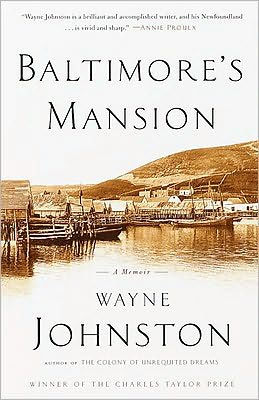In this loving memoir Wayne Johnston returns to Newfoundland-the people, the place, the politics-and illuminates his family's story with all the power and drama he brought to his magnificent novel, The Colony of Unrequited Dreams.
Descendents of the Irish who settled in Ferryland, Lord Baltimore's Catholic colony in Newfoundland, the Johnstons "went from being sea-fearing farmers to sea-faring fishermen." Each generation resolves to escape the hardships of life at sea, but their connection to this fantastically beautiful but harsh land is as eternal as the rugged shoreline, and the separations that result between generations may be as inevitable as the winters they endure. Unfulfilled dreams haunt this family history and make Baltimore's Mansion a thrilling and captivating book.
"1003840832"
Descendents of the Irish who settled in Ferryland, Lord Baltimore's Catholic colony in Newfoundland, the Johnstons "went from being sea-fearing farmers to sea-faring fishermen." Each generation resolves to escape the hardships of life at sea, but their connection to this fantastically beautiful but harsh land is as eternal as the rugged shoreline, and the separations that result between generations may be as inevitable as the winters they endure. Unfulfilled dreams haunt this family history and make Baltimore's Mansion a thrilling and captivating book.
Baltimore's Mansion: A Memoir
In this loving memoir Wayne Johnston returns to Newfoundland-the people, the place, the politics-and illuminates his family's story with all the power and drama he brought to his magnificent novel, The Colony of Unrequited Dreams.
Descendents of the Irish who settled in Ferryland, Lord Baltimore's Catholic colony in Newfoundland, the Johnstons "went from being sea-fearing farmers to sea-faring fishermen." Each generation resolves to escape the hardships of life at sea, but their connection to this fantastically beautiful but harsh land is as eternal as the rugged shoreline, and the separations that result between generations may be as inevitable as the winters they endure. Unfulfilled dreams haunt this family history and make Baltimore's Mansion a thrilling and captivating book.
Descendents of the Irish who settled in Ferryland, Lord Baltimore's Catholic colony in Newfoundland, the Johnstons "went from being sea-fearing farmers to sea-faring fishermen." Each generation resolves to escape the hardships of life at sea, but their connection to this fantastically beautiful but harsh land is as eternal as the rugged shoreline, and the separations that result between generations may be as inevitable as the winters they endure. Unfulfilled dreams haunt this family history and make Baltimore's Mansion a thrilling and captivating book.
14.99
In Stock
5
1

Baltimore's Mansion: A Memoir
288
Baltimore's Mansion: A Memoir
288Related collections and offers
14.99
In Stock

Product Details
| ISBN-13: | 9780307481924 |
|---|---|
| Publisher: | Knopf Doubleday Publishing Group |
| Publication date: | 01/21/2009 |
| Sold by: | Random House |
| Format: | eBook |
| Pages: | 288 |
| File size: | 2 MB |
About the Author
From the B&N Reads Blog
